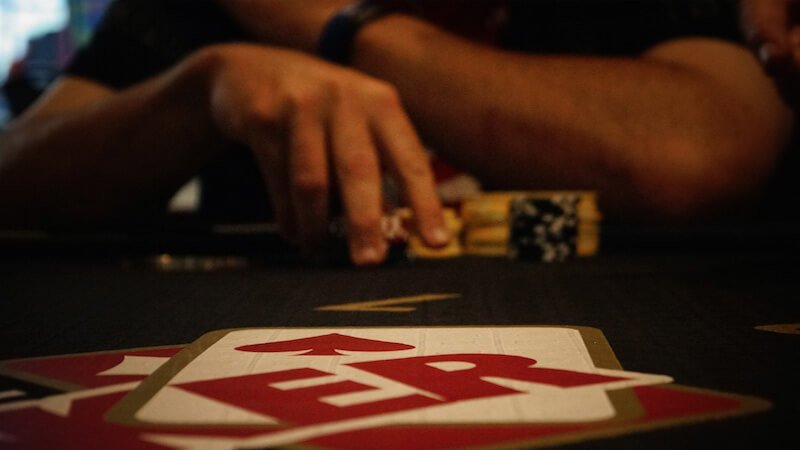
Drawing Hands Poker
- Learn how to play drawing hands
- How likely will you be to make your big hand with the next card
- Consider the odds of hitting the hand with the odds of winning the hand
In Texas Hold’ Em, you will undoubtedly be presented with a number of opportunities to play drawing hands in poker. What this means is that you will have a hand that has the potential to be a monster, but you need one more card to make it happen. The hands provide a great opportunity to make money, but they are extremely difficult to play for novice players. If you are at an aggressive table, then you will have to face a number of bets and raises from players who are looking to force you out of the hand. In this article, I will address how to play drawing hands in poker and protect yourself from big loses.
Most of the time, your drawing hands will consist of either a flush draw or a straight draw. The key to making an assessment of these hands is to consider exactly how likely it will be that you will be able to make your big hand with the next card. This involves a semi-advanced poker strategy that is known as odds calculation; you have to consider how many “outs” you have in the deck. An “out”, as you will learn, is a card that will give you the hand that you are drawing for. If you had, for example, a spade flush draw, then your outs would consist of spade cards. Predictably, the more outs that you have, the better your chances will be of making your hand with the turn or with the river. If you are considering a flush draw, then you should know that there are generally a total of nine outs available, since you would hold two spades and two spades would be on the board. Though it is possible that there are fewer spades available in the deck, you have no way of knowing that. With this in mind, you must always operate under the assumption that there are nine spades at your disposal.
Straight draws are no different, as you can calculate the odds of hitting a hand just as well. Not all straight draws are created equally, though, an inside straight draw and an open-ended straight draw are two completely different hands when it comes to considering odds. With an open-ended straight draw, you have the chance to hit either card on the end of the straight. An inside straight draw, as the name would indicate, gives you only the chance to hit a card on the inside of the straight. An open-ended straight draw gives players eight total outs, while an inside straight draw will only afford four possible winning outs. That is why most players will not draw for an inside straight draw unless they have a flush draw to go along with it. The odds of hitting such a hand are highly unlikely.

Drawing Hands in Poker and Calculating Odds
Once you familiarise yourself with the odds and numbers for these hands, you have to make a decision about what to do with these out cards. As stated before, the more outs you have, the better off you are going to be. This doesn’t give you the entire story, though. In addition to considering the odds of hitting the hand, you have to consider the actual odds of winning a hand, even if you hit the hand you were drawing for. This includes calculating the pot odds of a hand and considering whether or not it is smart to call a certain sized bet. This might seem like a difficult concept, but I will do my best to explain it further in this article.
Players can calculate their odds of winning the hand by using the number of outs that they have and comparing that to the cards in the deck that you wouldn’t want to see. For example, if you are holding a flush draw after the flop, you have a total of nine outs to make your hand on the turn. This means that there are a total of 47 cards that you don’t know. Of those 47, nine of them will make your hand and the other 38 will leave you wanting. If you slide that into a simple ratio, you understand that your odds are 38 to 9, which equates to around 4 to 1 odds of making the hand. For every one time that you make your hand on that turn, there will be four times where you won’t. It’s important to know these things when making decisions of calling or folding.
The basic assumption that goes along with this line of pot odds strategy is that your made hand will be good enough to win the pot. You should hope that a flush will take down the pot, but it is worth considering that your flush could be bested by a better flush or even a full house. Still, you should operate with the assumption that most of the time, your hand will be good enough to get the job done. Take the previous example and apply it to a situation that you might see. When you face a bet in a hand, you have to compare it to the overall size of the pot. For example, if your opponent bets $100 into the pot, making it $500, you have to call the $100 in order to have a shot at winning $500. This gives you pot odds of 5:1. In this instance, you will be getting better pot odds than your hand presents. In this scenario, you should make the call, since the odds say that if you only win once out of every five times, you will still come out on top as far as money goes. This follows in other examples, as well. If your pot odds are larger than the odds of making your hand, then it’s normally a good idea to make the call.
Odds are certainly not concrete, as they change fluidly throughout the hand depending upon the situation. Depending upon your specific draw and the amount of money put into the pot, you will have different decisions to make. Though this strategy might seem difficult to master at first, it is absolutely important if you are going to be playing drawing hands. After a while, you will get used to the mathematical part of the game and you can focus on winning the hands and playing the players.